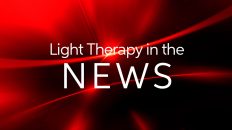Myopia, also known as shortsightedness or nearsightedness, is a common condition that develops primarily during childhood.1 Progressive myopia is nearsightedness that continues to worsen over time, leading to high myopia, often defined as –5 or –6 diopters (D) or more, which is associated with increased risk of developing conditions that cause irreversible visual impairment, including myopic maculopathy, glaucoma, or even retinal detachment.2 An effective treatment to control the progression of myopia, therefore, is critically important for preserving eye health and quality of life.
In the past decade, increased time spent outdoors in bright light has been established as an effective protective factor for myopia development.3,4 A 3-year cluster-randomized trial conducted by our research group in Guangzhou, China, demonstrated that an additional 40 minutes of outdoor time every day reduced myopia incidence by at least 20%.5 The protective effect of exposure to outdoor bright light and its dose-response relationship were confirmed by a trial in Taiwan and animal model research.6, 7, 8 Since then, researchers have proposed renovating classrooms and installing glass walls and ceilings9,10 as a means to increase the intensity and duration of protective bright light exposure for students, although these strategies often are expensive and pragmatically challenging.
As an alternative to increasing bright light exposure, we propose to deliver light on the retina directly at a much shorter duration of exposure but repeatedly for myopia control. We intend to use a device that emits red light at 650 nm in wavelength based on the fact that this was already approved and is used widely for amblyopia treatment in China so that the safety of the participants can be potentially maximized. The selection of treatment method is also based on unpublished anecdotal findings from children who used the device for the purpose of amblyopia treatment, where increased choroidal thickness and blood flow and stabilization of axial elongation were observed.
By the time of this manuscript’s preparation, a published report also demonstrated that this strategy, carried out using a similar device, significantly reduced the rate of myopia progression and axial length (AL) elongation over 6 months, similar to orthokeratology compared with single-vision spectacle (SVS) wear.11 Herein, we report the results of a prospective, multicenter, randomized clinical trial to assess the efficacy and safety of repeated low-level red-light (RLRL) therapy in myopia control in children. . . . (read more)
SOURCE: Ophthalmology

















